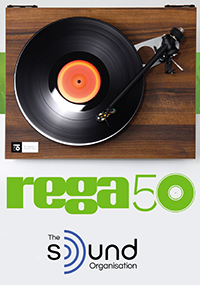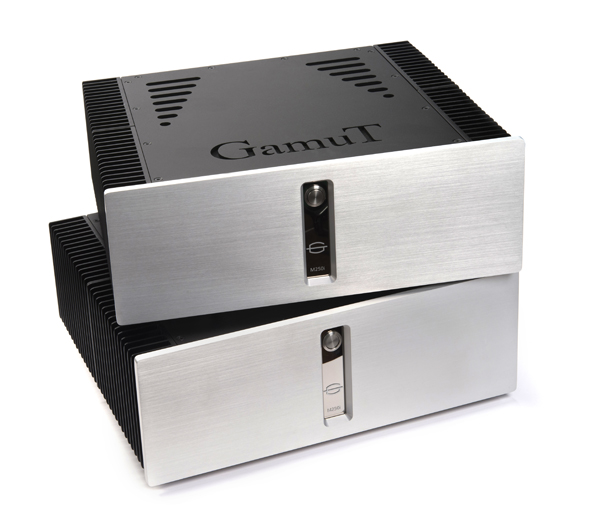
It’s my turn to get in on all the GamuT fun. Our publisher has been using GamuT speakers for years now and managing editor Rob Johnson is smitten with the D3i preamplifier.
Of the few manufacturers that build a full complement of electronics and speakers, they voice things differently. Burmester, for example, produces speakers that are somewhat forward, punchy and a little tipped up on the bottom and the top, yet the electronics are very warm sounding, almost tube-like, though fully solid-state.
GamuT however, is somewhat different. The speakers have an incredibly natural voice, and the electronics even more so. Even though their electronics and speakers produce perfect synergy, as you might expect because their components are much more neutral, tonally speaking, you do not have to have an all-GamuT system to achieve great results. Though you just might want to for simplicity’s sake.
Like the average Dane, the M250i is slim. 84 pounds (38kg) is substantial, but not what you’d expect a 250-watt per channel (into an 8 ohm load) that doubles into 4 ohms and still produces 900 watts into 2 ohms. Lifting the cover with the GamuT logo, it’s easy to see why; the power supply is huge! Unlike some solid-state amplifiers that require a huge bank of output devices to produce high power, GamuT uses two really big MOSFET transistors per channel, capable of passing 400 peak amperes of current each. Naim also takes this approach with their 500 series amplifier and the result is very special. Two transistors means no device matching is necessary, with none of the associated problems. Less is more.
While on that subject, the M250i has an interesting bit of simplicity or complexity, depending on how you look at it. On the rear panel, there are two sets of speaker outputs that you might mistake to use to bi-wire a pair of speakers. Don’t do it. One has a traditional resistor and coil output filter, as many solid state amplifiers do, more suited to ESL speakers and those with more difficult impedance loads, while the other outputs (the ones closer to the heatsinks) are direct coupled outputs. GamuT claims that either way, you can’t hurt these amplifiers, but I did follow their lead when using my pair of Quad 63s.
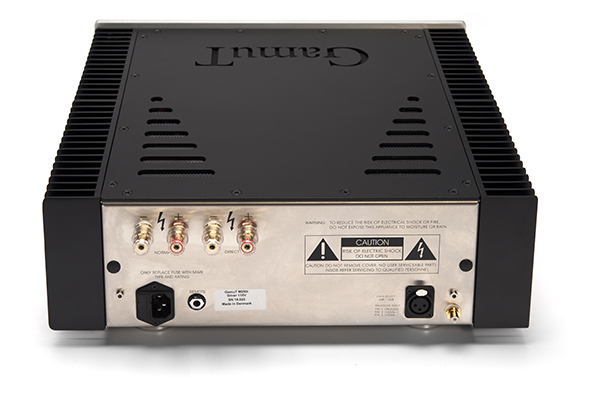 Inputs are via RCA or balanced XLR, and this is a fully balanced amplifier, so that mode will provide the best results. It’s worth mentioning that it is tough to tell the difference in sound using the ARC REF5 preamplifier, which sounds equally good through it’s balanced, and RCA outputs––and I have equally impressive results with my CJ Act Two preamplifier, which is RCA only.
Inputs are via RCA or balanced XLR, and this is a fully balanced amplifier, so that mode will provide the best results. It’s worth mentioning that it is tough to tell the difference in sound using the ARC REF5 preamplifier, which sounds equally good through it’s balanced, and RCA outputs––and I have equally impressive results with my CJ Act Two preamplifier, which is RCA only.
Danes are usually somewhat reserved, but the GamuT manual is not only well written but also pretty amusing to read. They make great points about setup, cables and gain, mentioning that “at 4 ohms, full output power is more than 151,000,000,000,000,000 times larger than the input noise power.” A cursory listen confirms that these monoblocks are indeed quiet.
Not only does this provide a fatigue-free sound, but I’m sure this simple design contributes to another wonderful aspect of the M250i: it sounds incredible at low volume. Amplifier genius and mad scientist Nelson Pass likes to say that if the first watt isn’t great, the rest don’t matter. The M250i exemplifies this philosophy. Make no mistake, when you want to crank AC/DC or Skrillex, the M250i is fully capable. The cannon shots at the end of “For Those About to Rock” are awesome and have the necessary “crack” upon ignition without blur.
Mated to my Vandersteen 5A speakers, which are just slightly warm tonally, the M250i proves a perfect match for the rest of my system, utilizing an Audio Research REF 5 preamplifier. For decades I’ve been a fan of a great tube preamplifier mated to a powerful solid-state power amplifier to reap the rewards of both. The M250i does not disappoint in any way.
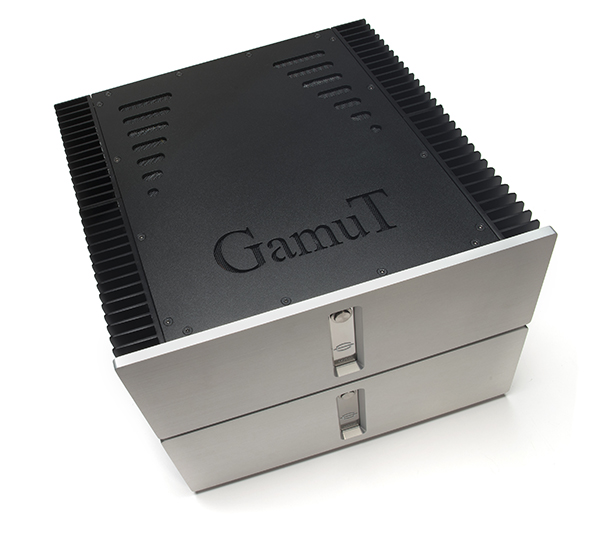 Never edgy or strident, the M250i’s feel a little foggy when powered up from ice cold. They only draw 50 watts in standby mode, so unless your energy habits have you immersed in guilt, I say leave them plugged in all the time. Otherwise, expect about 30 minutes before they reach full capability.
Never edgy or strident, the M250i’s feel a little foggy when powered up from ice cold. They only draw 50 watts in standby mode, so unless your energy habits have you immersed in guilt, I say leave them plugged in all the time. Otherwise, expect about 30 minutes before they reach full capability.
Unless you have the world’s most inefficient speakers, your ears will run out of headroom before the M250is will. Even listening at brain damage levels, these amplifiers do not run overly hot, so you will not be able to heat your listening room with them. Even after exhausting my record collection, I find it impossible to overdrive or overheat the GamuT amplifiers. I am most impressed at how they fail to draw any attention to themselves – they merely let the music flow.
What I do notice is the way these amplifiers render the finest of detail without ever sounding harsh, strident, or particularly solid-state in character. Well-worn recordings feel brand new again. A TONE favorite, the Crash Test Dummies’ Give Yourself a Hand, is full of sonic surprises. With extra overdubs and little vocal anomalies floating all around my listening area, it is almost like consuming something illegal. The only thing I didn’t really get to explore was the depth of the M250i’s bass response, as my Vandersteens only need the main power amplifier to go down to 80hz. But our publisher put them to the full test.
Spending way too much time with the entire Neu! catalog offers up the same results with jangly guitars and driving rythym in full force. Not happy to stop there, a couple of evening’s worth of Eno’s Ambient series, finishing up with the classic Ambient 1: Music For Airports is marvelous. Eno’s gentle touch on the keyboard is even more delicate than I remember, with decay that seems to go on forever. Even this vacuum tube lover finds plenty to love here, and it really has me considering a pair for myself, especially in light of just having bought 16 KT120 tubes!
The GamuT amplifiers are a statement product, and for all but the most insane audiophile, should easily be the last power amplifiers you’ll need to buy. They offer musical delight with no negatives whatsoever. Enthusiastically recommended.
Additional listening – Going all GamuT
After discussing the performance of the GamuT M250i amplifiers with Rob and Jerold, we all agree that they stand on their own as world-class power amplifiers. In the context of tube and solid-state systems, they integrate easily into whatever components you happen to be using. Thanks to their high current capability, they drive any speaker with ease. Though class AB in design, their lack of grain reminds me of a class-A amplifier, or the Burmester 911.
The M250is join a very elite group of solid-state amplifiers that just reveal music, not really sounding like transistor amplifiers or vacuum tubes. As one of the few manufacturers that can successfully build electronics and speakers with equal prowess, a complete GamuT system is wonderful. And for someone wanting an incredibly high performance audio system without the anxiety of trying to choose the right amp, preamp, speakers and digital player, I suggest an all-GamuT system. Complete the system with a set of their power cords, interconnects and speaker cables – one stop shopping!
Mated with their preamplifier and the recently reviewed RS5 speakers provides a highly compelling and dynamic system that can play anything you can throw at it with ease. Mixing it up with different amplification proves more different than better or worse. The Audio Research GSPre and GS150 offer up a bit more holographic, three dimensional presentation, while the mighty Pass Xs Pre and Xs300 monoblocks present a slightly warmer tonal balance and a little more slam. Keep in mind that these are hairsplitting differences; you won’t go wrong either way.
Of course the M250is sound lovely with my reference GamuT RS5 and S9 speakers. I’ve heard the M250is at a number of trade shows, and the match with GamuT speakers is as close to perfection as it gets. Just as these monoblocks work well in tandem with other preamplifiers and source components, they should be able to drive anything. Torturing them with Quad, MartinLogan and Acoustat ESLs is a breeze, and they work equally well with the Epicon 8s from Dali we recently had in for review as well as the Dynaudio Evidence Platinum speakers. I even lugged them to a friend’s house with a pair of old Apogee Divas! Nothing presents a problem to these high current powerhouses.
Because Mr. O’Brien’s Vandersteen 5A’s are passively crossed over at 80Hz, I spent quite a bit of time examining the bass character of the M250is. Whether I was enjoying “Dark Side of the Moon” or “Bitch Better Have My Money,” these amplifiers provide weight, control and fine detail. A perfect balance is struck in texture, never under nor overdamped, something that is easy to notice with speakers like the GamuTs, which reproduce ultra low bass with ease, and often a hallmark of massive solid-state amplifiers.
Great as the M250is are with GamuT speakers, they are particularly good with the current Quad 2815s too. These speakers are mercilessly revealing and finicky to get good sound from, yet the GamuT amplifiers deliver a presentation that is smooth and dynamic, along with being controlled and forceful in the lower register––something not easy to achieve with the Quads. The thundering bass line in Bowie’s classic “Fashion” was wonderful to experience, yet in the middle of the dissonant piano solo in “Aladdin Sane,” the bass line is well articulated, holding its own space brilliantly between the keyboard and Bowie’s vocal. These are indeed special amplifiers, no matter what speakers you own and whatever your musical choices might be.
-Jeff Dorgay
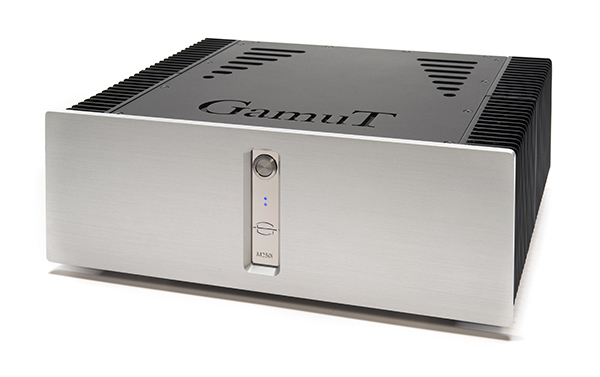 The GamuT M250i Monoblock Amplifiers
The GamuT M250i Monoblock Amplifiers
$28,995/pair
www.gamutaudio.com
Peripherals
Analog Source SME20 turntable/SMEV Tonearm, Sumiko Palo Santos cartridge
Digital Source Simaudio MOON 750D
Phonostage Audio Research REF Phono 2
Preamplifier Audio Research REF 5
Cable Nordost Frey
Speakers Vandersteen 5A


















